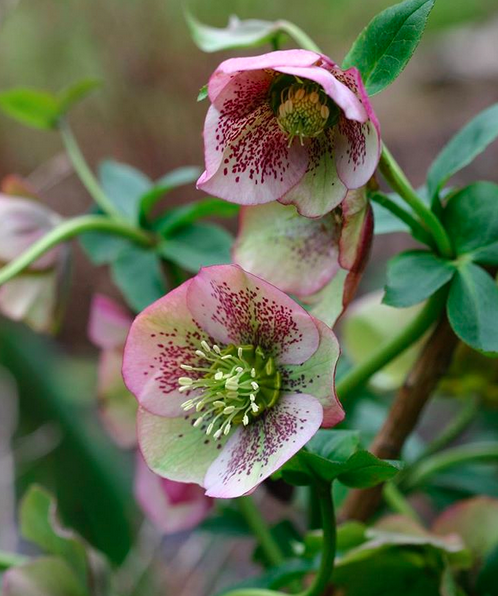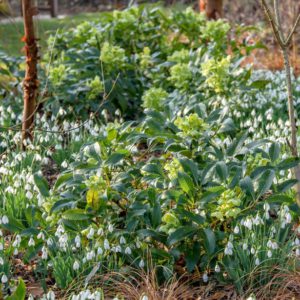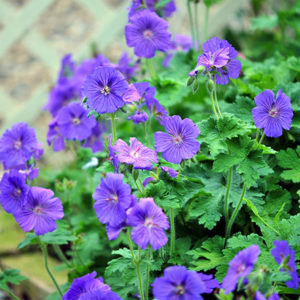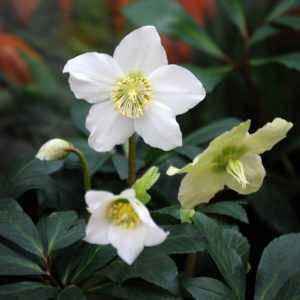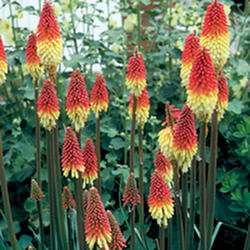Helleborus orientalis
€12.50
Frequently Bought Together
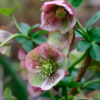


Description
Quick Facts
- Common Name: Lenten Rose, Oriental Hellebore
- Botanical Name: Helleborus orientalis
- Plant Type: Evergreen perennial
- Mature Height: 40-60cm
- Mature Spread: 45-60cm
- Flowering Period: February to April
- Flower Colour: White, pink, purple, burgundy, often spotted or veined
- Foliage: Dark green, leathery, deeply divided leaves
- Hardiness: RHS H6 (very hardy)
- Soil Requirements: Moist, well-drained, neutral to alkaline
- Aspect: Partial shade to full shade
- Maintenance: Low
Description
Embrace the enchanting beauty of Helleborus orientalis, the beloved Lenten Rose that transforms Irish gardens into tapestries of subtle colour just as winter loosens its grip and spring whispers its arrival. This treasured perennial offers an extraordinary palette of jewel-toned blooms that nod gracefully above evergreen foliage, creating months of quiet elegance when gardens are awakening from their winter slumber.
From late winter through mid-spring, this captivating plant produces an abundance of exquisite cup-shaped flowers in a mesmerising array of colours—from pristine whites and soft blush pinks to deep purples and rich burgundies, many adorned with intricate spotting, veining, or picotee edges. Each bloom hangs its head modestly, inviting closer inspection to reveal the intricate beauty within. The handsome evergreen foliage of deeply divided, leathery leaves provides year-round structure and creates elegant mounds that anchor shaded garden compositions.
Named for its tendency to bloom during the Lenten season, this Oriental treasure hails from Greece and Turkey, bringing centuries of garden heritage to Irish landscapes. Remarkably hardy and long-lived, Lenten Roses thrive in our climate, self-seeding gently to create drifts of colour that evolve and surprise with each passing year, as seedlings often display unique colour variations.
Create enchanting spring tapestries by pairing this versatile beauty with snowdrops, early daffodils, and primroses for layered seasonal interest, or combine with ferns, hostas, and epimediums for elegant shade garden compositions. Magnificent planted beneath deciduous trees, along woodland paths, or massed in drifts where their subtle beauty can be appreciated up close, bringing sophisticated colour and enduring charm to your Irish garden sanctuary.
Caragh Garden Notebook
Planting: Space plants 45-60cm apart in partial to full shade. Plant in autumn or early spring in moist, well-drained, humus-rich soil. Dig holes twice the width of the root ball and incorporate generous amounts of well-rotted compost or leaf mould. Plant with the crown at soil level. Water thoroughly and mulch around plants, keeping mulch clear of the crown.
Soil Preparation: Thrives in neutral to alkaline soil with pH 7.0-8.0, though tolerates slightly acidic conditions. Prefers moisture-retentive yet well-drained soil enriched with organic matter. Avoid waterlogged sites. In acidic soils, incorporate garden lime to raise pH. Benefits from annual mulching with leaf mould or well-rotted compost.
Container Growing: Suitable for containers using quality, soil-based compost with added grit for drainage. Choose pots minimum 35cm diameter and depth. Water regularly to maintain consistent moisture but never allow to become waterlogged. Feed monthly during growing season with balanced liquid fertiliser. Protect from excessive winter wet by positioning under eaves or moving to sheltered locations.
Seasonal Care: Remove old, damaged, or tatty leaves in late winter before flowers emerge to showcase blooms and prevent fungal diseases. Deadhead spent flowers unless seed is desired for naturalising. Apply slow-release balanced fertiliser in early spring after flowering. Mulch annually with organic matter to retain moisture and suppress weeds. Water during dry spells, especially when in bud and flower. Best left undisturbed to develop into established clumps.
Division: Hellebores dislike disturbance and are best left to form mature clumps. If division is essential, lift carefully in early autumn after flowering, ensuring each division has several growing points and healthy roots. Replant immediately at the same depth and water thoroughly. Plants may take 1-2 years to re-establish fully and flower abundantly after division.
Additional information
| Pot Size |
|---|

